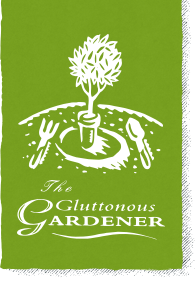Championing lost ancient fruits

We want to bring back forgotten fruits of the past like the quince and medlar, fruit trees which for some time have been forgotten and we want to show you why this shouldn't be the case.
Ancient Fruits
Medlars and Quinces are almost never seen in shops and for this we blame the supermarkets, for their love of uniform fruits which ripen at the same time.
There is something so pleasing about fruits which will not only provide you with a bounty of unusual and delicious fruits for the kitchen but that also add beauty to your garden with flourishes of snow white blossom in the spring. Their fruits are so pleasingly unsuitable for supermarket shelves, if we had our own way we'd make sure that every garden had a long forgotten fruit tree such as a mulberry, quince or medlar for everyone to try.
Medlar Trees
You may have been lucky enough to have tasted the medlar's copper-pink pulp which has a complex flavour described as both spicy and smoky, with notes of ripe apricot, cinnamon, caramel and sweet wine. It can be turned into the most beautiful rose coloured jellies or roasted with butter and cloves for a traditional desert.
The medlar has an unusual ripening process where they stay hard and inedible until they start to decay and soften in a process called 'bletting'. The medlar's distinctive shape gave the fruit its Old English name openears meaning open-arse. In France they are known as cul de chien which gave the fruit an affinity with the bawdy and lewd. Medlar sellers in Paris, famous for their crude banter, drew large crowds to hear their smutty patter.
We are very pleased to see that our Medlar Box is currently featuring in the BBC Good Food Magazine December issue within their Christmas Gift Guide.
Quince Trees
A most beautiful fruit, the quince will reward any lucky grower with pretty pink and white blossom in the spring followed by sweetly fragranced yellow fruits. Despite the fact this handsome tree will thrive in almost any location and condition, they are now little cultivated in Britain which is something we are passionate about changing.
The Owl and the Pussycat were not entirely foolish and knew the delights of the fragrant flesh of this charmingly lumpy fruit. They dined on mince and slices of quince which they ate with a runcible spoon. Unbelievably sour when raw, the quince's fruit is transformed when cooked into delectable rose-coloured jams and jellies. The Spanish love quinces and produce delicious Membrillo, a sweet and golden quince cheese which we would recommend pairing with a delicious chunk of Manchego cheese.






